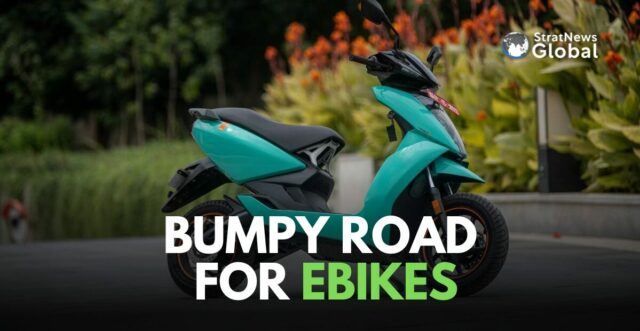In 2070, India is expected to have transitioned to net zero or low carbon economy as part of its climate change commitments. The new subsidies for electric vehicles announced on Monday must be seen in that framework, with Rs 10,900 crore budgeted for setting up charging infrastructure and developing the EV manufacturing ecosystem.
The granular details are set out in a government notification under the nomenclature PM E-Drive Scheme valid from October 2024 to April 2026. Briefly, it will offer subsidies on the sales of electric 2&3 wheelers, e-ambulances, e-trucks along with grants for creating capital assets such as e-buses, upgrading testing agencies and so on.
Government Intervention?
State governments will have to step in with fiscal and non-fiscal incentives (concessional road tax, toll tax, parking fees etc). Buses will get the lion’s share of the subsidies amounting to Rs 4,391 crore followed by two-wheelers at Rs 1,772 crore.
Now comes the jolt (not unexpected since it had been indicated earlier), the subsidies for two wheelers is being reduced to 5,000 per vehicle from next year. For three-wheelers it is limited to Rs 25,000 per vehicle.
One would presume that with the industry poised to sell 1.8 crore two-wheelers this year, mostly of the polluting petrol-powered variety, government would have sought to push demand more towards electrics by incentivising industry and consumers.
That didn’t happen and there’s no explanation forthcoming. But speculation has centred on industry not wanting to pull the plug on what is a profitable line of products.
“The danger in this kind of thinking is two-fold,” said an industry watcher. “Contrary to what is widely believed, 1/4th of the two-and-three wheelers on the roads are second and third hand models long past their prime. These contribute to pollution apart from being unsafe to ride and there is no plan for identifying and scrapping these vehicles.”
Chinese EV Dominance
The other point is the risk of losing out on emerging technologies. Industry sources told Stratnewsglobal that European, and US car makers (not Tesla) are pulling the doors on Chinese EVs precisely because they never invested enough in such technology and now face being wiped out by Chinese EV makers.
Japan’s predicament is slightly different. It conceded the EV space to China long ago and has preferred to focus on hybrids for now, and for the long-term hydrogen gas, where its expertise is unmatched.
It explains why India’s market leader Maruti Suzuki is not gung ho about electrics although it is expected to launch an EV early next year. Same is the case with Toyota and Honda.
On the other hand, the “Korean cousins” Hyundai and Kia, are going strong on electrics.
E-bike Paradox
Sources from the two-and-three-wheeler industry concede that while India is a major producer and exporter of petrol-powered scooters and motorcycles, it is already at the top when it comes to sales of electric three wheelers. According to the International Energy Agency, 5,80,000 electric three-wheelers were sold in India last year against 3,20,000 in China.
Electric two-wheelers didn’t do badly either, 8,80,000 were sold in India (China sold much more 6 million) and this is the paradox. The reduction in subsidies for electric powered scooters and three-wheelers, the sources said, could hit this growth.
“More important, it will hit the mass adoption of electric two-and-three wheelers which should be the goal of this government,” said the senior representative of an electric scooter maker, pointing out that “incentives are required because these vehicles are expensive even though Bajaj, TVS, Ather and Ola are working on them. It’s only when five million such vehicles are sold that the industry becomes viable. It incentivises the entire vendor chain to set up shop here.”
Cost Competitive
The vendor chain coming up in India will help overcome the current crippling dependence on China. It will also fuel the the growth of the drone industry, which is almost entirely electric. But government’s role is crucial for any major disruption in the bike market to happen.
There is an urgency here. While China is the biggest producer of two-wheelers that are widely sold in markets in Africa, they are of poor quality. But it may not be long for the Chinese to scale up in that direction and given their capacity advantage, they can outproduce India. India therefore needs to become cost competitive to be able to take on China. The challenge is out there, so is the opportunity.





